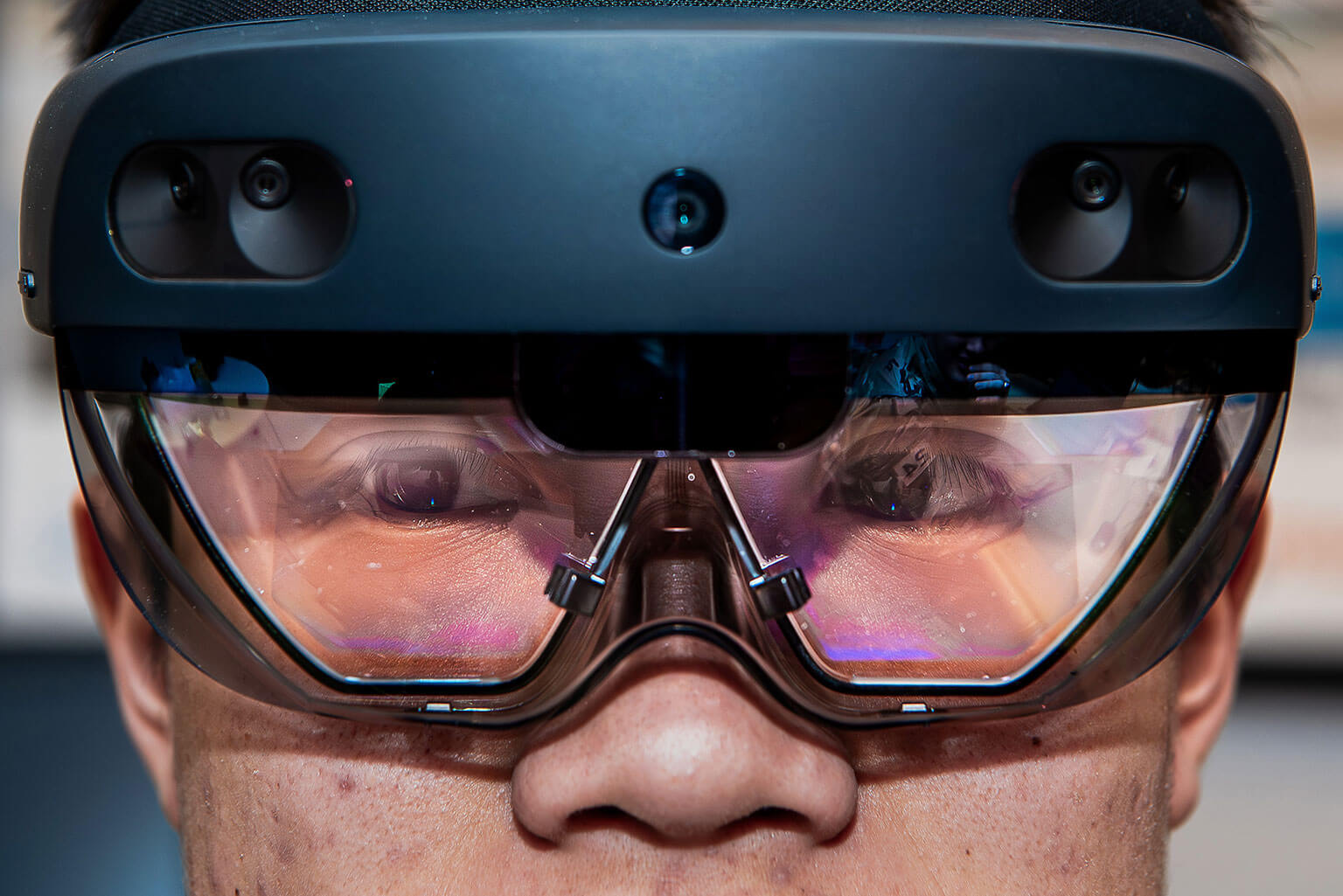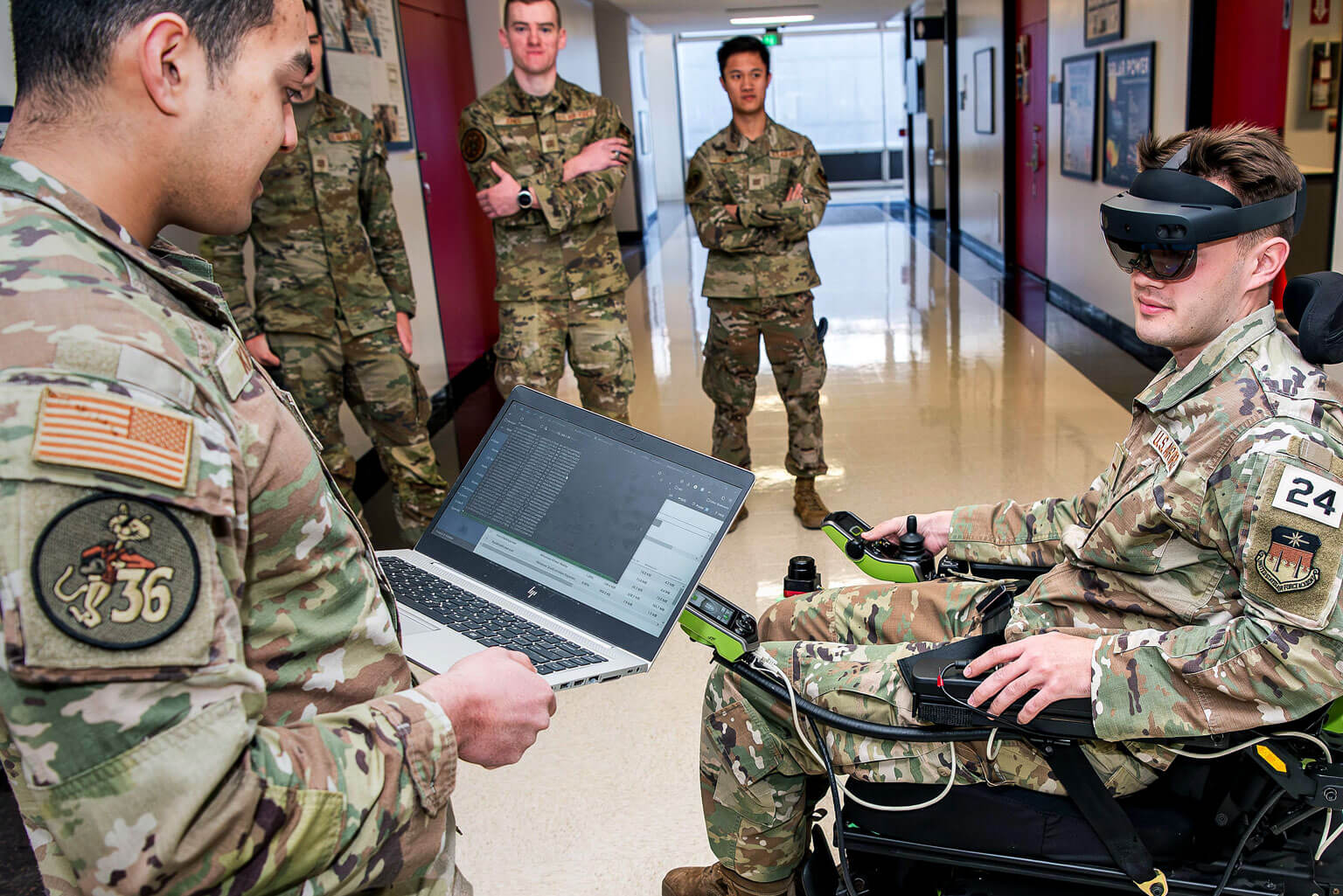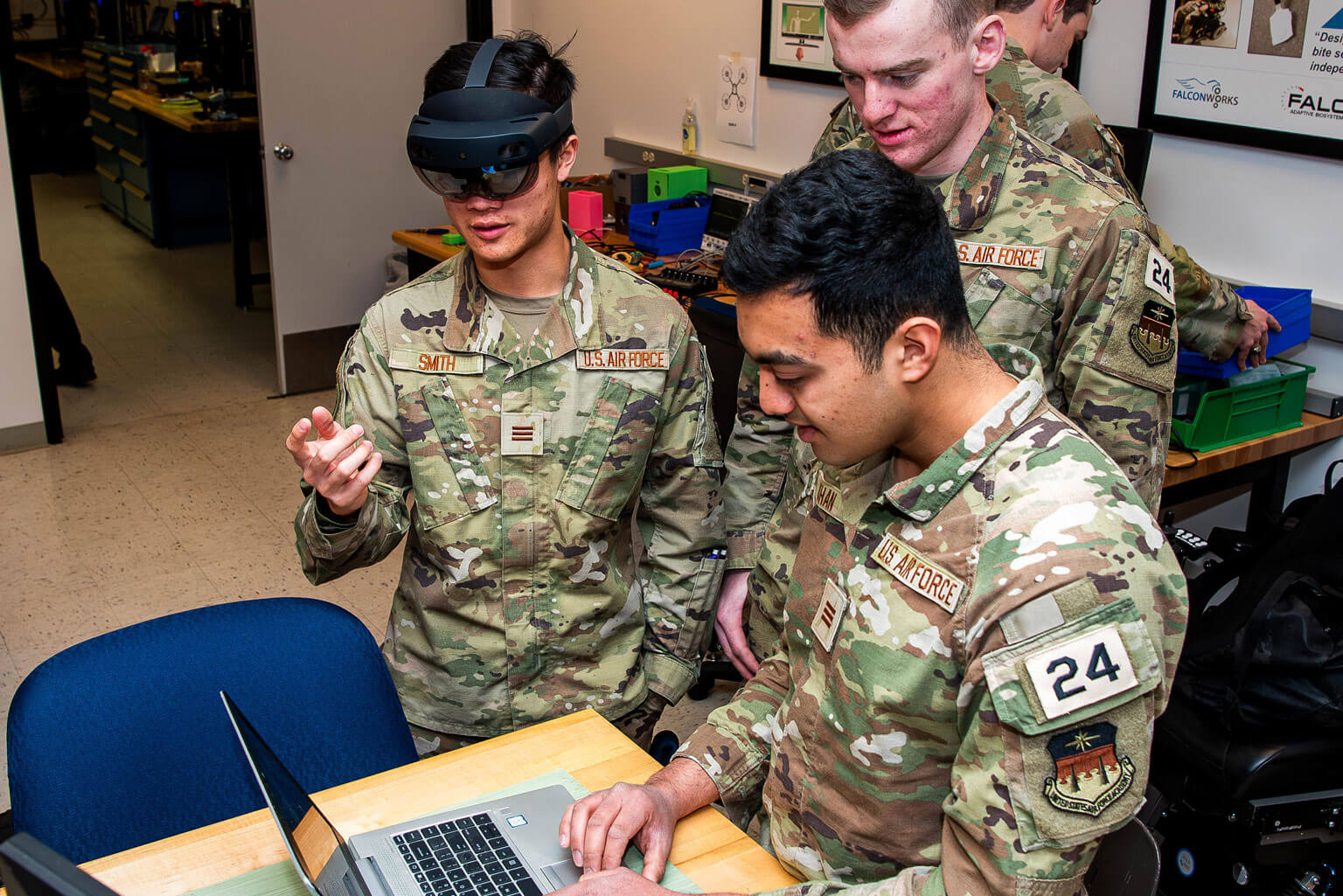Cadets look to patent gaze-assisted wheelchair technology
 U.S. Air Force Academy Cadet 1st Class Sam Smith prepares for another test of the gaze-assisted wheelchair, the Department of Electrical and Computer Engineering capstone project, Feb. 1, 2024. (U.S. Air Force photo by Trevor Cokley)
U.S. Air Force Academy Cadet 1st Class Sam Smith prepares for another test of the gaze-assisted wheelchair, the Department of Electrical and Computer Engineering capstone project, Feb. 1, 2024. (U.S. Air Force photo by Trevor Cokley)
By Randy Roughton
U.S. Air Force Academy Strategic Communications
U.S. AIR FORCE ACADEMY, Colo. – When Col. Brian Neff arrived in the Department of Electrical and Computer Engineering in 2018, he wanted his assistive technology laboratory filled with projects that would captivate cadets. The following year, Neff began the gaze-assisted wheelchair project for senior capstone students.
“I wanted cadets to see themselves contributing to the project when they walked by the lab,” said Neff, a Department of Electrical and Computer Engineering permanent professor and mentor for the Assistive Technology Capstone.
 U.S. Air Force Academy Department of Electrical and Computer Engineering Cadets 1st Class Ameen Khan, left, and Cade Isley, right, conduct the latest test of a gaze-assisted wheelchair, their assistive technology capstone project. Feb. 1, 2024. Looking on are fellow team members Cadets 1st Class Luke Ringe, left, Lucas Jones, middle, and Sam Smith, right. (U.S. Air Force photo by Trevor Cokley)
U.S. Air Force Academy Department of Electrical and Computer Engineering Cadets 1st Class Ameen Khan, left, and Cade Isley, right, conduct the latest test of a gaze-assisted wheelchair, their assistive technology capstone project. Feb. 1, 2024. Looking on are fellow team members Cadets 1st Class Luke Ringe, left, Lucas Jones, middle, and Sam Smith, right. (U.S. Air Force photo by Trevor Cokley)
Nearing project completion
The five-year project is the wheelchair’s eye-motion-assisted controller. Work began with early reverse-engineering on the wheelchair in 2019 with Neff and a Class of 2020 cadet during the COVID-19 shutdown. Senior cadets in 2021 became the first complete capstone team to work on the project, followed by the past two classes. Cadets who worked on the project in the past two years provided invaluable feedback and guidance to this year’s team that moved the project toward completion.
When Cadets 1st Class Cade Isley, Lucas Jones, Ameen Khan, Luke Ringe and Sam Smith graduate, their names will be attached to the paperwork for a patent for the project, Neff said.
“The primary contribution this group of cadets made is two-fold,” Neff said. “First, they refined the previous prototypes. They took the things that worked and refined them so that they are repeatable and usable even in an uncontrolled environment. Second, they redesigned the control interfaces, based off their experiences with video games. They have used some of that methodology to design a completely new control interface that is much more usable.”
Serving dual humanitarian and military needs
The wheelchair has a potential Department of Defense purpose. Neff said it might one day provide an “eyesight-alone” mechanism for pilots, ground vehicle controllers or operators of any complex military system. Also, once the cadets complete their work this semester, the team will present the wheelchair to someone it can help. This allows the department to serve a humanitarian need.
“The one thing about this project that was very unique is that we can give something to somebody at the end of our time working with it,” Khan said. “That was very appealing to me.” Each cadet brought his discipline and expertise to the assistive technology capstone team. Ringe excels at 3D design and electronics integration. As such, he troubleshoots and reverse-engineers the chair’s interface. Jones and Khan, Electrical and Computer Engineering majors like Ringe, are coding experts and built the tools necessary to create the project’s software. Systems Engineering majors Isley and Smith worked on human factors and project management.
Motivated by love
One team member felt an emotional motivation for the project. Isley’s youngest cousin was born with a rare mitochondria disease and now needs a walker to get around her high school.
“Every day with her is a gift,” Isley said. “When I picked Systems Engineering with a focus on Human Factors, I heard about the kind of projects I could work on, optimizing systems and designing projects to make people’s lives easier. I thought about my little cousin. Maybe she can’t travel to Colorado to use the wheelchair, but it could make life easier for someone like her.”
 Cadets 1st Class Ameen Khan, front, Lucas Jones, middle, and Sam Smith, left, program changes into the gaze-assisted wheelchair, the U.S. Air Force Academy Department of Electrical and Computer Engineering capstone project. (U.S. Air Force photo by Trevor Cokley)
Cadets 1st Class Ameen Khan, front, Lucas Jones, middle, and Sam Smith, left, program changes into the gaze-assisted wheelchair, the U.S. Air Force Academy Department of Electrical and Computer Engineering capstone project. (U.S. Air Force photo by Trevor Cokley)
For more photos of the gaze-assisted wheelchair, see Flickr.